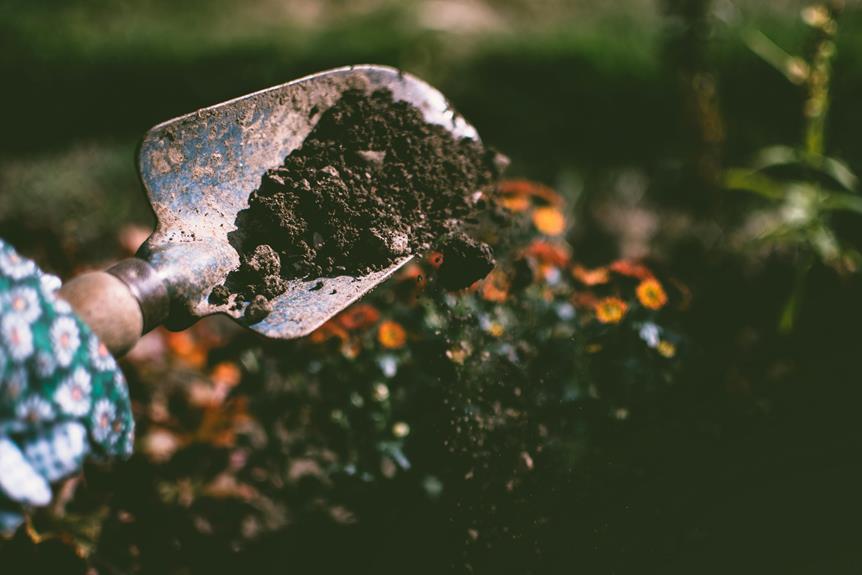How To Grow Peppermint Outdoors
Posted on 22-04-2024 02:21 am

How To Grow Peppermint Outdoors
If you're aiming to cultivate peppermint in your outdoor space, understanding the key factors is essential. From selecting the ideal location to maintaining proper care, each step plays an important role in the success of your peppermint plants. By following specific guidelines tailored to your growing conditions, you can guarantee a thriving peppermint patch that yields aromatic leaves for various uses. But remember, there's more to uncover beyond the basics to truly master the art of growing peppermint outdoors.
Key Takeaways
- Ensure at least 5 hours of direct sunlight daily.
- Plant in well-draining soil with pH between 6.0-7.5.
- Space plants 18-24 inches apart for proper growth.
- Water deeply, avoiding waterlogging, for healthy roots.
- Prune regularly for bushier growth and higher yields.
Sunlight and Soil Requirements
For successful growth of peppermint outdoors, make sure that you place your plants in an area that receives at least 5 hours of direct sunlight daily. Peppermint thrives in sunlight, so finding a spot with ample sunshine is essential.
When planting your peppermint, opt for well-draining soil that's moist and rich in organic matter. This type of soil provides the necessary nutrients for your plants to flourish. Additionally, guarantee that the soil has a pH level ranging from 6.0 to 7.5, as peppermint prefers slightly acidic to neutral conditions for best growth.
To further support your peppermint plants, consider the importance of good air circulation. Adequate air movement around your plants can help prevent diseases and promote overall plant health in an outdoor setting.
If you want more control over soil quality and sun exposure, raised beds or containers are excellent options for growing peppermint. These elevated planting methods not only enhance drainage but also make it easier to adjust sunlight levels for your plants' specific needs.
Planting and Spacing Peppermint
When planting peppermint outdoors, make sure you space the plants 18-24 inches apart to allow for proper spreading and prevent overcrowding. This spacing guarantees that each plant has enough room to grow and access sunlight efficiently.
For successful growth, plant your mint in well-draining soil with a pH level between 6.0-7.0. Peppermint thrives when it receives at least five hours of direct sunlight daily. To match its preferred conditions, plant peppermint in USDA hardiness zones 3-11.
Proper spacing and sunlight exposure are key factors that contribute to healthy peppermint growth. By spacing your mint plants correctly and providing adequate sunlight, you create an ideal environment for them to flourish.
Proper Watering Techniques
To ensure your peppermint plants thrive outdoors, mastering proper watering techniques is vital. When it comes to mint care, ensuring consistent moisture levels is essential. Here are some important tips to help you water your peppermint effectively:
-
Water deeply: Give your peppermint plants a good soak when watering to encourage deep root growth, making them more resilient.
-
Avoid waterlogging: Be mindful not to overwater your peppermint, as waterlogged soil can lead to root rot, harming the plant.
-
Morning watering: Water your peppermint in the morning to allow the foliage to dry out during the day. This practice helps reduce the risk of fungal diseases and keeps your plants healthy.
Pruning and Maintenance Tips
Prune your peppermint regularly to promote bushier growth and maintain plant health and appearance. By trimming back the stems, you encourage the plant to grow more vigorously, preventing it from becoming too leggy and sparse.
Be sure to remove any dead or damaged stems as well, as they can hinder the overall health of your peppermint. While pruning, keep an eye out for pests and diseases that may be lurking on your plant, catching any issues early on.
Proper maintenance is key to ensuring a bountiful yield of flavorful leaves for all your culinary and medicinal needs. Remember not to over-prune, as this can stress the plant and impede its growth.
With the right care and attention, your peppermint plant will thrive, providing you with an abundant supply of fresh and aromatic leaves.
Controlling Spread With Containers
Using containers is an effective method to prevent peppermint from spreading uncontrollably in your outdoor garden. When you contain your Peppermint in pots or containers, you can control its spread and keep it from taking over your garden space.
Here are some key benefits of using containers for managing the spread of Peppermint:
- Containers restrict the root growth of Peppermint, preventing its invasive nature from causing issues in your garden.
- Using containers allows for easy management and containment of Peppermint plants, giving you more control over where it spreads.
- Peppermint grown in containers is less likely to spread and become a nuisance in the garden, making it a more manageable plant to grow outdoors.
Conclusion
Now that you know the key steps to growing peppermint outdoors, you can confidently cultivate a thriving herb garden.
With just a little effort, you'll soon be enjoying an abundance of fresh, fragrant peppermint leaves for all your culinary and medicinal needs.
So get out there and let your green thumb work its magic - before you know it, your garden will be overflowing with minty goodness!